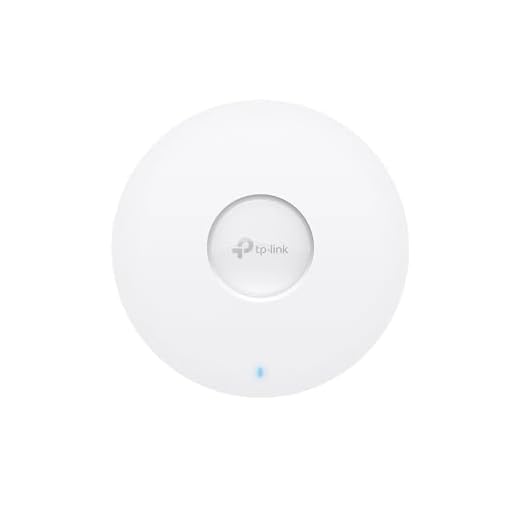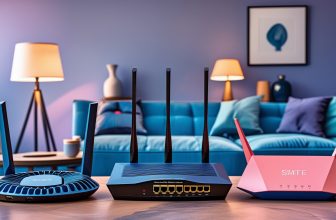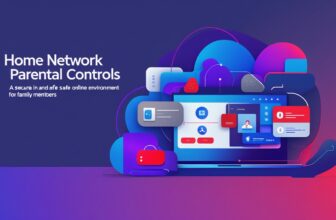Enterprise-Grade Security For Your Home Network Without Enterprise Pricetag
You don’t need an IT department or unlimited funds to make your home network much safer. Enterprise-grade here means practical controls: segmentation, monitoring, threat prevention, and secure remote access — not racks of gear.
This article shows a budget-minded path: pick flexible hardware, use smart firmware and software, and apply a few configuration habits. You’ll get big security wins for roughly the price of a gaming router. Read on to learn simple steps that protect devices, isolate risks, and keep you in control.
No fluff, just practical, proven guidance you can follow.




Smart Protection for Your Home and Business
Understand the threat model and set realistic priorities
Identify what matters and who might care
Start by listing your assets: work laptop, phone, kids’ tablets, smart locks, cameras, NAS. For each, ask: would this being compromised cost me money, privacy, or safety? Real homes face a mix of opportunistic threats (malicious websites, phishing), device compromises (IoT cameras), and occasional targeted attempts (spear-phishing or stolen credentials). A quick inventory takes 10–15 minutes and immediately clarifies priorities.
Common risks to consider
- Malicious websites and phishing that steal credentials.
- Compromised IoT devices used as botnet nodes.
- Accidental data leaks (cloud misconfigurations, shared photos).
- Targeted remote access attempts on exposed services.
Prioritize by value and likelihood
Score assets 1–5 on value and likelihood, then focus on the high/high items first. Example: your work laptop (value 5, likelihood 3) beats a smart light bulb (value 1, likelihood 2). For parents, kids’ privacy and school accounts often jump to the top.
Favor layered, low-effort controls
Don’t chase silver bullets. Combine simple layers: keep firmware updated, run DNS filtering, isolate IoT on a guest/VLAN, enforce MFA for accounts, and back up important files. A small set of layered controls stops most common attacks with minimal cost.
Next, you’ll use these priorities to choose hardware and firmware that give you flexibility and power without enterprise prices.
Pick the right hardware and firmware for power and flexibility
Why gaming routers are a sweet spot
Gaming routers pack beefy CPUs, extra RAM, and strong radios—exactly what you need if you want VPNs, traffic inspection, and multiple SSIDs without a separate appliance. Think of one as a mini enterprise box that doesn’t require procurement approval or a rack.
Specs that actually matter
Focus on components, not buzzwords:
- CPU: dual-core or quad-core ~1.5GHz+ helps with WireGuard/OpenVPN and lightweight IDS/IPS.
- RAM: aim for 256–512MB+ if you plan to run additional services or OpenWrt packages.
- Radios: dual‑band (2.4/5GHz) with good antenna/DFS support for consistent coverage.
- Expansion: USB ports, PCIe/M.2 or SFP options let you add storage, cellular failover, or faster uplinks.
- Hardware offload / VPN acceleration: look for AES-NI or vendor NAT/VPN offload if you want line‑rate encrypted tunnels.
Firmware: stock, open-source, or firewall OS?
Your choice determines flexibility:
- Stock: easiest; some gaming firmwares (Asus, Netgear) include QoS and VPN accel.
- Open-source: OpenWrt or Asuswrt‑Merlin unlocks packages, custom routing, and better security updates.
- Router appliance OS: pfSense/OPNsense on a small x86 box gives real firewall features (IDS, VLANs), but needs more power and learning.
Quick tip: check community support and recovery methods (USB restore, serial pins). I swapped a cheap ISP router for an Asus with Merlin and WireGuard—jumped from 30 Mbps to ~200 Mbps because the CPU and acceleration matched my needs.
Segment your network like a pro: VLANs, Wi‑Fi zones, and device groups
Segmentation is one of the highest-impact enterprise habits you can bring home. Start small: create distinct zones for work, computers, IoT, cameras, and guests so a compromised light bulb can’t touch your laptop.
Decide your zones and naming
Pick clear names and consistent VLAN IDs—e.g., vlan10-work / SSID “Home-Work”, vlan20-iot / SSID “Home-IoT”, vlan30-guest / SSID “Home-Guest”. Keep SSIDs descriptive but not revealing (avoid “JohnsIoT”). Use VLANs for wired devices and separate SSIDs for Wi‑Fi.
Basic firewall rules that actually protect
Use a default-deny posture between VLANs, then allow only what’s necessary:
- Allow: Work → Internet
- Allow: Camera VLAN → NVR IP on specific ports
- Deny: IoT → Work (no cross-VLAN access)
- Deny: Guest → LAN (only Internet)
Log rule hits for a week to validate and loosen only if needed.
DHCP, DNS, and device handling
Run DHCP per VLAN (or central DHCP with VLAN scopes). Reserve static IPs for cameras, NVRs, NAS, and your primary laptop. Use local DNS records or Pi-hole per VLAN so device names resolve safely and you can apply DNS filtering per zone.
Practical example
I moved smart bulbs and cameras to vlan20, blocked their access to vlan10 (work), and gave cameras only the NVR’s IP. When a firmware exploit hit a device, it couldn’t scan or reach my work machine—simple, effective isolation.
Segmentation makes later controls (IDS/IPS, DNS filtering, remote access rules) far more reliable—which is exactly what you’ll tackle next.
Add enterprise-style protections: IDS/IPS, DNS filtering, and secure remote access
IDS/IPS — what to expect and how to run one
You don’t need a $10k appliance to stop noisy scans and known exploits. Run Suricata or Snort on a capable router/appliance (OPNsense/pfSense, Protectli/Intel NUC) or use the built-in threat features on devices like the UniFi Dream Machine Pro. Basics:
- Suricata is multithreaded and scales with CPU; aim for a modern quad-core for >200 Mbps inspection.
- Expect false positives—start in detection mode, tune rules, then switch to prevention.
- Use Emerging Threats (ET) or vendor rule feeds and enable automatic updates.
DNS filtering — cheap, high-payoff protection
Block malicious domains and reduce telemetry with Pi-hole or AdGuard Home. Run them per-VLAN or as your DHCP-distributed resolver so:
- IoT/guest VLANs get strict blocking lists.
- Work VLAN uses a lighter blocklist to avoid breaking services.
A Pi-hole on a Raspberry Pi or a small VM gives immediate wins (fewer trackers, blocked payday-scam domains).
Secure remote access — don’t expose admin ports
Replace exposed web admin ports with a VPN or jump host:
- Use WireGuard (fast, simple) or Tailscale for mesh-style admin access.
- Put a small bastion VM on a management VLAN for SSH with key-only auth and rate-limiting.
- Add 2FA for any remote admin portal and log all sessions.
A friend once avoided a nasty router compromise because they only allowed admin via WireGuard from their phone—no open ports, no drama.
Next up: you’ll want to see this traffic and prepare for incidents—so let’s cover monitoring, logging, and planning.
Monitor, log, and plan for incidents without a huge toolchain
Enterprise security isn’t just prevention—it’s detection and response. You don’t need a SIEM team to know when something’s wrong.
Where to send logs
Pick one central place so you can search quickly:
- Router → local syslog on a NAS (Synology DiskStation) or Raspberry Pi 4 running rsyslog/Grafana Loki.
- Small cloud: a $5/month VPS (DigitalOcean) or cheap log service (Papertrail/Logflare) for off-site retention.
- Keep sensitive logs local (auth failures); send summaries off-site for redundancy.
Simple alerting you can live with
Automate the noisy bits and only wake yourself for real issues:
- Email or SMS for repeated failed logins.
- Push notifications via Home Assistant, Gotify, or Pushbullet for critical alerts.
- Lightweight dashboard: Grafana on a Pi/VM for traffic spikes, or UniFi controller charts for device behavior.
Quick checks that spot abnormal activity
Make a five-minute daily/weekly walk-through:
- New or unknown devices in the DHCP client list.
- Unusual outbound spikes or sustained high upload.
- Repeated failed auth attempts or unexpected admin logins.A neighbor caught a camera phoning home every night by noticing regular traffic spikes in Grafana—simple visibility saved them.
Incident-response checklist (keep it laminated)
- Isolate affected device (separate VLAN / block).
- Collect logs (router, NAS, cloud) and timestamp everything.
- Restore from verified backup or factory reset if needed.
- Reset credentials, rotate keys, and patch.
- Reintroduce device cautiously; monitor for recurrence.
Automate log rotation, alerts, and backups where possible so recovery is fast and boring—then you’re ready for the final tips in the Conclusion.
Start small, iterate, and keep your home secure without breaking the bank
Pick one improvement—better router/firmware, VLANs, or DNS filtering—and implement it this week. Measure the change in performance and visibility, then iterate.
Keep updates, backups, and occasional audits part of your routine. Over time small, consistent steps give you enterprise‑level protections at very modest cost. If you want a recommended first step, try flashing supported open firmware or enabling DNS filtering.






